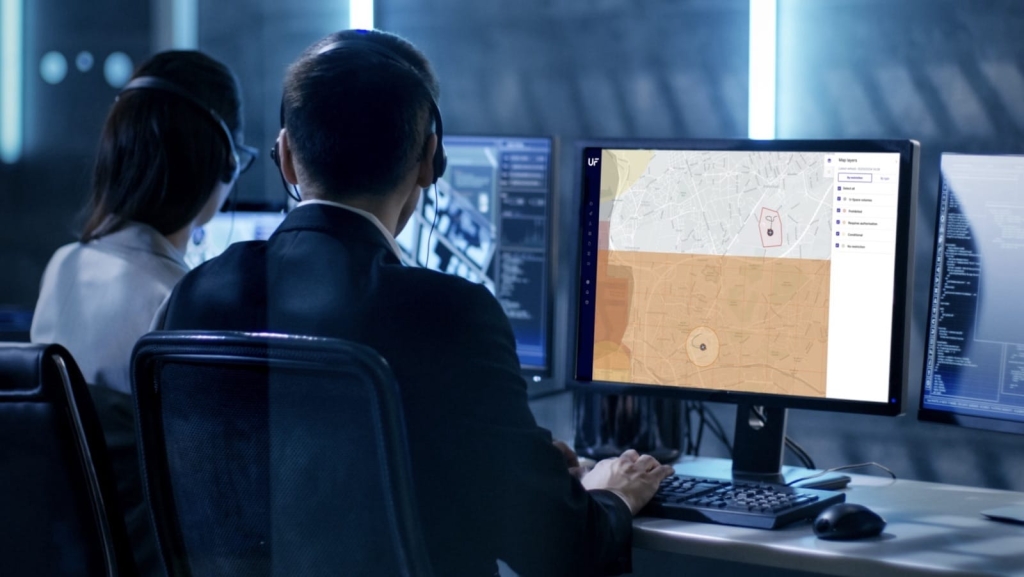Terra Drone’s Unifly Demonstrates Advanced Collision Avoidance At European U-Space Project In Romania

Terra Drone subsidiary Unifly has successfully demonstrated collision avoidance and flight separation management technologies at the SPATIO Project Open Day in Romania, showcasing systems that enable drones to share airspace safely through automated traffic management. The October 29 demonstrations at INCAS Strejnicu Flight Base validated technologies designed to prevent mid-air collisions during both flight planning and active operations.
The European event highlighted Solution 1A: Strategic Conflict Resolution and Separation Management Service, marking a critical milestone toward routine beyond visual line of sight drone operations across Europe’s integrated airspace.
Three-Year European Initiative Reaches Key Validation Milestone
The SPATIO Project brings together 23 partners from 10 countries under the SESAR 3 Joint Undertaking, a European Union-funded initiative focused on unmanned aircraft separation management. Led by ENAIRE, Spain’s air navigation service provider, the consortium includes aerospace leaders Airbus, Boeing, Collins Aerospace, and EUROCONTROL alongside UTM specialists like Unifly.
Unifly demonstrated its Separation Management Service through live flight operations alongside partners ROMATSA, INDRA, UPV, and INCAS. The demonstrations showcased seamless human-machine interfaces and real-time data exchange in a multi-USSP (U-space Service Provider) environment—a crucial step toward scalable, interoperable U-space deployment across Europe.
According to SPATIO Project Manager Pablo Sánchez-Escalonilla, “for the first time, SPATIO has constituted a consortium with research institutions and universities that have been previously researching on UAS separation management in SESAR with key industrial entities in the U-space domain, all of them engaged in the common objective of developing a ready-to-implement solution after three years.”
The project achieved Technology Readiness Level 6 (TRL6), demonstrating that the separation management systems work reliably in relevant operating environments—not just laboratory conditions.
Strategic And Tactical Conflict Resolution Systems
SPATIO addresses both strategic (pre-flight) and tactical (in-flight) separation challenges that become critical as drone traffic scales. The strategic system analyzes flight plans before operations begin, identifying potential conflicts and adjusting routes to prevent collisions. This optimization increases airspace capacity while maintaining safety margins.
During flight operations, the tactical system monitors drone activity in real time, predicting conflicts using separation minima standards. According to project documentation, when conflicts arise, the system generates resolution instructions such as altitude adjustments or route modifications, communicating them to operators.
The Separation Management Service delivers real-time information on protection volumes and airspace status, enabling conflict-free and optimized drone operations. Unifly contributed to the design, integration, and validation of these strategic-phase services, enhancing flight planning efficiency and operational fairness through advanced airspace management.
The system includes a ground-based safety net capable of sending commands directly to drones when pilots fail to respond to instructions—a critical backup for maintaining separation standards in high-density airspace.
Terra Drone’s Growing UTM Portfolio
Terra Drone Corporation, which acquired a majority stake in Unifly in July 2023, continues expanding its global UTM capabilities. The Japanese company also invested in U.S.-based Aloft Technologies in February 2024, positioning itself at the intersection of European U-space and American UTM development.
Terra Drone was listed on the Tokyo Stock Exchange Growth Market (Stock Code: 278A) on November 29, 2024, and secured the top spot in Global Drone Service Provider Rankings for 2024. At the Japan Startup Awards 2025, the company received the Minister of Land, Infrastructure, Transport and Tourism Award for addressing social challenges in infrastructure and transportation.
Beyond UTM development, Terra Drone maintains a portfolio of over 3,000 completed drone projects worldwide across surveying, inspections, agriculture, and industrial applications in sectors including oil and gas, construction, chemicals, and energy.
DroneXL’s Take
While American drone operators continue navigating the proposed 650-page Part 108 regulations that may not be implemented until 2027, Europe is actively deploying operational UTM systems with real-world validation. The SPATIO demonstrations represent more than academic research—they’re proving that automated separation management works at scale in complex airspace.
This matters because every month the U.S. delays implementation is a month European operators gain operational experience, refine technology, and capture market share in BVLOS operations. Australian operators recently secured self-assessment BVLOS approvals that reduce deployment timelines from months to days, while Canadian regulations transformed BVLOS operations through streamlined frameworks.
Terra Drone’s strategic positioning across European (Unifly), American (Aloft), and Asian markets reflects an understanding that UTM infrastructure—not just hardware—determines which companies win the BVLOS race. The Japanese firm’s acquisitions of Unifly and regulatory compliance specialists position it to navigate fragmented global regulatory environments as they mature.
We’ve tracked Unifly’s progress from the pioneering Port of Antwerp SAFIR project through multiple European initiatives including ENSURE and European Defence Agency military risk assessment work. The pattern is clear: Europe is building the digital infrastructure for routine BVLOS operations while American regulators debate.
The bigger question is whether U.S. operators will find themselves competing in a market where European and Asian competitors have years of operational experience and mature, interoperable traffic management systems. Regulatory caution may protect against theoretical risks, but it guarantees real competitive disadvantages.
What do you think? Share your thoughts in the comments below.
